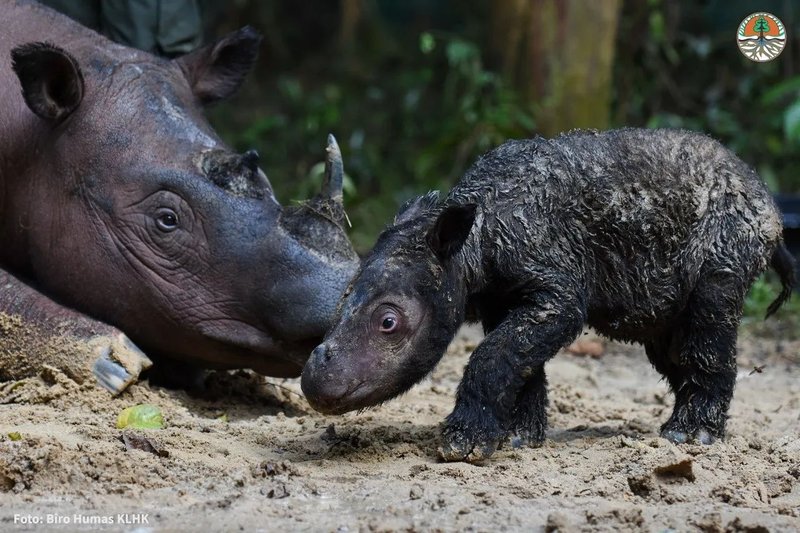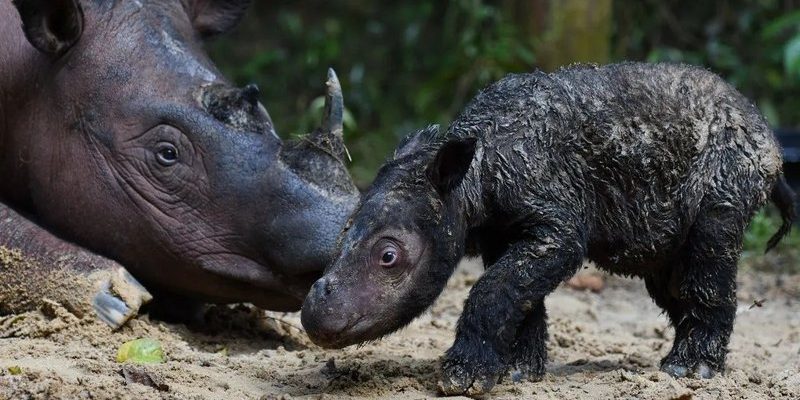
Here’s the thing: as the smallest living rhinoceros species, the Sumatran rhino doesn’t get nearly the attention it deserves. Maybe you’re thinking, “What do I really need to know about this rhino?” Well, let me explain the common myths that surround it. Understanding these will not only enhance your knowledge but also drive awareness for conservation efforts, which are so crucial given that only around 80 individuals remain in the wild.
Myth 1: All Rhinoceroses are the Same
It’s easy to think all rhinoceroses are cut from the same cloth, but that’s far from the truth. The Sumatran rhino is distinctly different from its larger African relatives, like the white and black rhinos. While they share the same family tree, their habitats, sizes, and behaviors vary significantly.
For instance, the Sumatran rhino is often the size of a small horse, standing at just 4-5 feet tall and weighing up to 1,000 pounds. In comparison, a white rhino can tip the scales at over 5,000 pounds! Their skin is also quite unique—thick, layered folds that resemble armor, unlike the smoother skin of African rhinos.
You might be wondering about their diets. While most rhinoceroses graze on grass, the Sumatran rhino is more of a browser, munching on leaves, fruits, and shrubs. This difference in diet not only shapes their physical form but also how they interact with their environment, highlighting the uniqueness of each species.
Myth 2: Sumatran Rhinos Are Aggressive
Many people believe that all rhinoceroses are aggressive and territorial. While it’s true that they can be defensive, especially when threatened, the Sumatran rhino is generally more shy and elusive. Often, they prefer to avoid confrontation altogether.
Honestly, they’re more like introverts in the animal kingdom. They spend most of their time in dense forests and are primarily solitary creatures. Unlike their more boisterous relatives, Sumatran rhinos are often seen as elusive shadows in the jungle, rather than thunderous giants charging across the plains.
This behavior also stems from their dwindling population. With fewer peers around, their social interactions are limited. So when you hear stories about aggressive rhinos, remember that the Sumatran variety prefers a quiet existence, largely avoiding confrontations.
Myth 3: Sumatran Rhinos Are Not Endangered
There’s a misconception that because these rhinos are not as well-known as African rhinos, they’re not at risk. Sadly, that couldn’t be further from the truth. The Sumatran rhino is critically endangered, with fewer than 80 individuals left in the wild. This status is primarily due to habitat loss and poaching.
The destruction of their rainforest homes means they have less space to roam and find food. In addition, their horns are highly prized in certain cultures, leading to illegal hunting. It’s a heartbreaking reality; these gentle creatures are on the brink of extinction.
Conservation efforts are underway, but they need our attention and support. Organizations are working tirelessly to protect their habitats and promote breeding programs. By knowing the true situation, we can help raise awareness and contribute to their preservation.
Myth 4: Sumatran Rhinos and Elephants Are Closely Related
You might have heard conversations suggesting that Sumatran rhinos are closely related to elephants due to their size and habitat. However, this is incorrect. While both belong to the larger group of mammals called perissodactyls, they are from completely different families.
The Sumatran rhino belongs to the family of rhinoceroses, while elephants form their own distinct family called Elephantidae. In fact, the closest living relatives to rhinoceroses are horses and tapirs—not elephants!
This distinction is crucial in understanding the evolutionary relationships among species. Each group has adapted uniquely to their environments, leading to the incredible diversity of animals we see today.
Myth 5: Sumatran Rhinos Don’t Communicate
You might think that these solitary animals lead quiet lives without much communication. But here’s the thing: Sumatran rhinos are quite vocal. They use a variety of sounds to express themselves, including grunts, whistles, and even snorts.
These sounds play an essential role in their social interactions, especially during mating season. Communication isn’t just a rare occurrence; it helps them maintain their territory and establish relationships.
Additionally, they leave behind markings and scents as a way to communicate with others in their vicinity. It’s fascinating how such a small population still finds ways to express themselves and connect, even if it’s more subdued compared to other species.
Myth 6: They Don’t Play a Role in the Ecosystem
One misconception is that the Sumatran rhino doesn’t contribute significantly to its ecosystem. In reality, they are crucial for maintaining the health of their forest habitats. As browsers, they help control plant growth, ensuring that the jungle remains balanced.
By eating various plants and fruits, they also facilitate seed dispersal. This process is vital for plant regeneration and biodiversity, making them important players in their environment.
Imagine a garden where the gardener is missing! Without the Sumatran rhinos doing their part, the balance of the forest could tip, affecting countless other species that rely on the same ecosystem. Their role is more significant than many realize, serving as a reminder of how every creature, no matter how small, plays a part in the grand tapestry of nature.
There’s a lot to unpack when it comes to the Sumatran rhino. From their unique traits and gentle nature to their critical role in the ecosystem, they are far more complex than many myths suggest.
By debunking these common misconceptions, we can foster a greater appreciation for this incredible creature and drive support for conservation efforts. As we sip our coffee and chat about these fascinating animals, let’s remember the importance of protecting them for future generations. Understanding and celebrating the truth about the Sumatran rhinoceros is a step toward ensuring these majestic beings continue to roam the planet for years to come.

